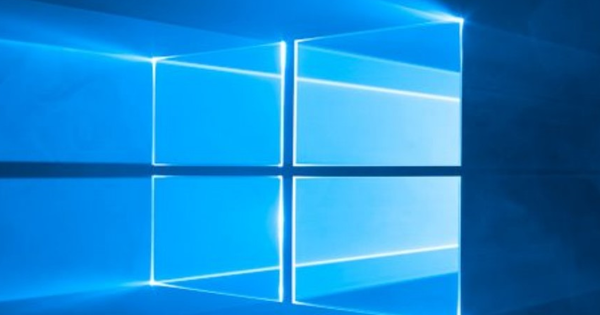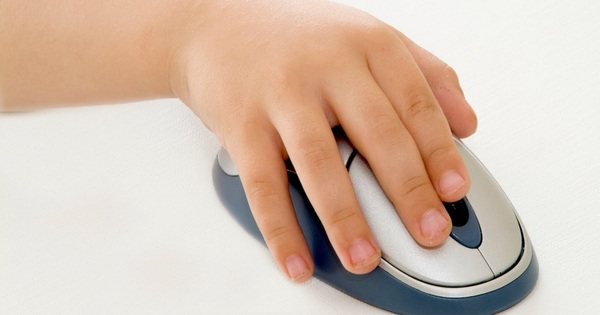The keyboard is probably one of the most important accessories for your PC next to the mouse, so it is important that you do not experience any problems while typing. Do you still run into the necessary problems, while the keyboard is in principle not physically defective? We give some tips to find a solution.
Is the keyboard defective?
Before we get started with symptoms and how to deal with them, it is first useful to check that the keyboard is not physically defective. Are keystrokes detected at all? If that is not the case, you can rule that out by connecting a second keyboard to the system via USB.
Suddenly other characters
You may have experienced that you were typing and suddenly your keys seemed to have a different function. The question mark behaves like a = and a backslash turned into a <. The cause is very simple: the keyboard has switched to another language version.
This often happens accidentally because the key combination for this is located where you often rest your hands on the keyboard. The combination Ctrl+Shift causes a different language version for the keyboard to be chosen. The solution is therefore just as simple: by pressing Ctrl+Shift the keyboard will return to normal. You can avoid this problem altogether by keeping only one language and one keyboard layout. The combination Dutch as language and United States (international) for the keyboard layout is the most common (see also box Keyboard layout).
To change this setting, go to the Control Panel and click below Clock, language and region on Changing keyboards and other input methods > Changing keyboards. Click here Dutch below Keyboard and then remove. That way, remove any format except United States (International). The keyboard can no longer switch to another layout.

keyboard layout
Keyboards under Windows have two characteristics: a input language and a keyboard layout. This is not entirely logical: the input language has little to do with the keyboard itself, but mainly with functionality. For example, Word recognizes certain languages and adjusts its automatic correction functions accordingly. An annoying side effect is that you sometimes suddenly end up with a different keyboard layout: if you type in English, Word also selects an English keyboard, and if another keyboard layout is linked to it, strange things suddenly happen.
If you have your settings in order, the selected input language does not matter. What matters is the keyboard layout: if it doesn't match the keyboard you want to use, the keys won't do what you expect them to do. For example, a Belgian keyboard has an AZERTY layout and a real Dutch key layout has the plus sign (+) next to the L key. Confusingly enough, almost everyone in the Netherlands nowadays uses a keyboard with the key layout that comes from the United States (QWERTY with the semicolon next to the L key). There are only multiple versions of it.
Special punctuation marks and 'dead keys'
Special punctuation marks such as diacritics and accents (so-called diacritics) can generally be entered by typing double or single quotation marks, followed by a vowel. After the punctuation mark, the keyboard pauses for a moment (the so-called 'dead key’) to decide what to do depending on the subsequent keystroke. Not everyone likes that. For example, if you type a lot of text with quotes, you should always be aware of what the computer will make of it, depending on the key that follows: a punctuation mark or an accent. You think to type a quotation mark and an e (‘e) and get an é. That's why some people still use Alt key combinations to recall special characters (such as Alt+130 for é).
The 'secret' of the dead key is in the keyboard layout (see also Keyboard layout box):
- The keyboard without dead key you get with the format: United States
- The keyboard of dead key you get with the format: United States (International)
You can change these language and country settings via the Control Panel, or as follows: go to Start , type to carry out' Press Enter and tap: control intl.cpl,,2 followed by again Enter.
Go to the tab Keyboards and Languages and press the button Change keyboard. Go to the tab General.
below Installed services you will now see which keyboard settings you already have available. Add what you may be missing – and above all remove what you don't need! You can always reinstall them if you miss them.
Make sure that the language/format combination you want to use is selected under Default input language and click Apply / OK.
Shortcut keys
Sometimes it can be useful to have multiple services installed, and sometimes you just suddenly find yourself stuck with them for some inexplicable reason. Fortunately, if you want to switch between different installed 'default input languages', you don't necessarily have to do this via the above route - you can also do this via keyboard shortcuts:
- Switch input language: left Alt+Shift
- To switch keyboard layout: leftCtrl+Shift
Note: Often it is precisely those shortcuts that, unnoticed, are responsible for strange keyboard behavior - that too can be a reason to limit the number of installed 'default input languages' to one.
Shift key remains active after pressing once
Normally you keep the shift key pressed when you want to type a capital letter. However, it is also possible that when you shift key once pressed also produces a capital letter when you've released Shift long ago. If you also hear a short beep, the function is Sticky Keys enabled. This happens automatically if you press the 5 times in a row shift key press (you still have to press Yes click, but in the heat of battle you may have done so by accident). The solution is very simple: press five more times shift and the function is turned off again. This feature is included in every Windows version, from XP to Windows 10. You can also disable the feature permanently.
You disable the feature by scrolling to Control Panel / Ease of Access / Ease of Access Center / Make the keyboard easier to use. There you remove the check Enable Sticky Keys.

Multimedia keys do not work
You have reinstalled or updated Windows and suddenly the keys that control the volume, start your mail program, etc. no longer work. The reason for this is that there are probably specific drivers associated with your keyboard that define the functions of these keys. Go to the manufacturer's site and download the keyboard drivers again.
It is also possible that other programs or drivers related to keyboards are interfering with the operation of your keyboard. Uninstall them if the problem persists.
Sometimes multimedia keys only work when using specific programs. This can often happen, especially if you already have an older keyboard. Sometimes the keyboard manufacturer gives some program tips for optimal compatibility.
Keyboard (and mouse) not responding after connecting
This problem is becoming less common because almost all mice and keyboards nowadays have a USB connection, instead of the old PS/2 system. However, if you still have a PS/2 mouse and keyboard, and they don't respond after reconnecting them, make sure you haven't plugged the mouse into the keyboard connector and vice versa. Except for color, they are identical plugs.
The first thought: a virus! However, the reality turned out to be a lot more innocent...Missing letters
You suddenly make a striking number of typos in the texts you produce. Upon further investigation, it appears that your skills have not diminished, but that the keyboard does not register certain keystrokes. If it is always the same key, then either the key is defective or there is dirt in it (just pop the key out if possible and clean it). If it is always a different letter and you have a wireless keyboard, then it is most likely time to replace the batteries.
Wireless load station
Problems can sometimes have causes that you really couldn't have imagined. For example, there is an example where all kinds of strange characters suddenly appeared on the screen without the user typing anything. The first thought: a virus! The reality, however, turned out to be a lot more innocent. Two wireless keyboards on the same frequency, one of which was in the closet. An object that fell on the keyboard and thereby pressed keys, then did the rest.

